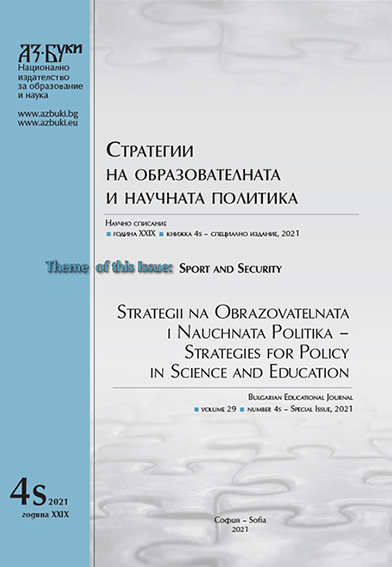Signal for Help
Signal for Help
Author(s): Milena Kuleva, Ina VladovaSubject(s): Social Sciences, Education, Psychology, Sociology, History of Education, Individual Psychology, Social psychology and group interaction, Psychology of Self, Health and medicine and law, Sports Studies, Globalization, Sociology of Education, Distance learning / e-learning
Published by: Национално издателство за образование и наука „Аз-буки“
Keywords: violence; domestic abuse; athletes; COVID-19
Summary/Abstract: The crisis, caused by COVID-19, created a lot of issues in this world. The phenomenon of “domestic abuse” escalated. The pandemic and the lockdowns, unfortunately, aided the “abusers”. The victims remained locked with their abusers and their “escape routes” and opportunities for help decreased. Methods. The aim of the present study is to examine the level of occurrence of violence among student-athletes, as well as their preparedness and competence to react. Results. From the obtained and presented data, it could be concluded that physical and sexual violence are not widespread among Bulgarian athletes. It is noteworthy that parents are more likely to physically abuse their children than the coaches are. Also, the relationship between the athletes themselves is not under the sign of violence – 82.7% (n = 115) say that they have never been a victim of physical violence by a teammate, and three of them say they have been a victim of sexual violence by a teammate. Conclusions. Given the growth in registered cases of violence, incl. the domestic violence, as well as globalization worldwide, it is necessary to implement a unified discrete signal that can be safely shown in the occurrence of violence. This signal is essential so that it can be used when needed from children to adults, from women and men. The promotion of the international signal for help is important in order to prevent and provide timely assistance to victims of violence. It is important for people to know about it, to use it when needed, but also to recognize it when someone uses it.
Journal: Стратегии на образователната и научната политика
- Issue Year: 29/2021
- Issue No: 4s
- Page Range: 74-83
- Page Count: 10
- Language: English
- Content File-PDF

